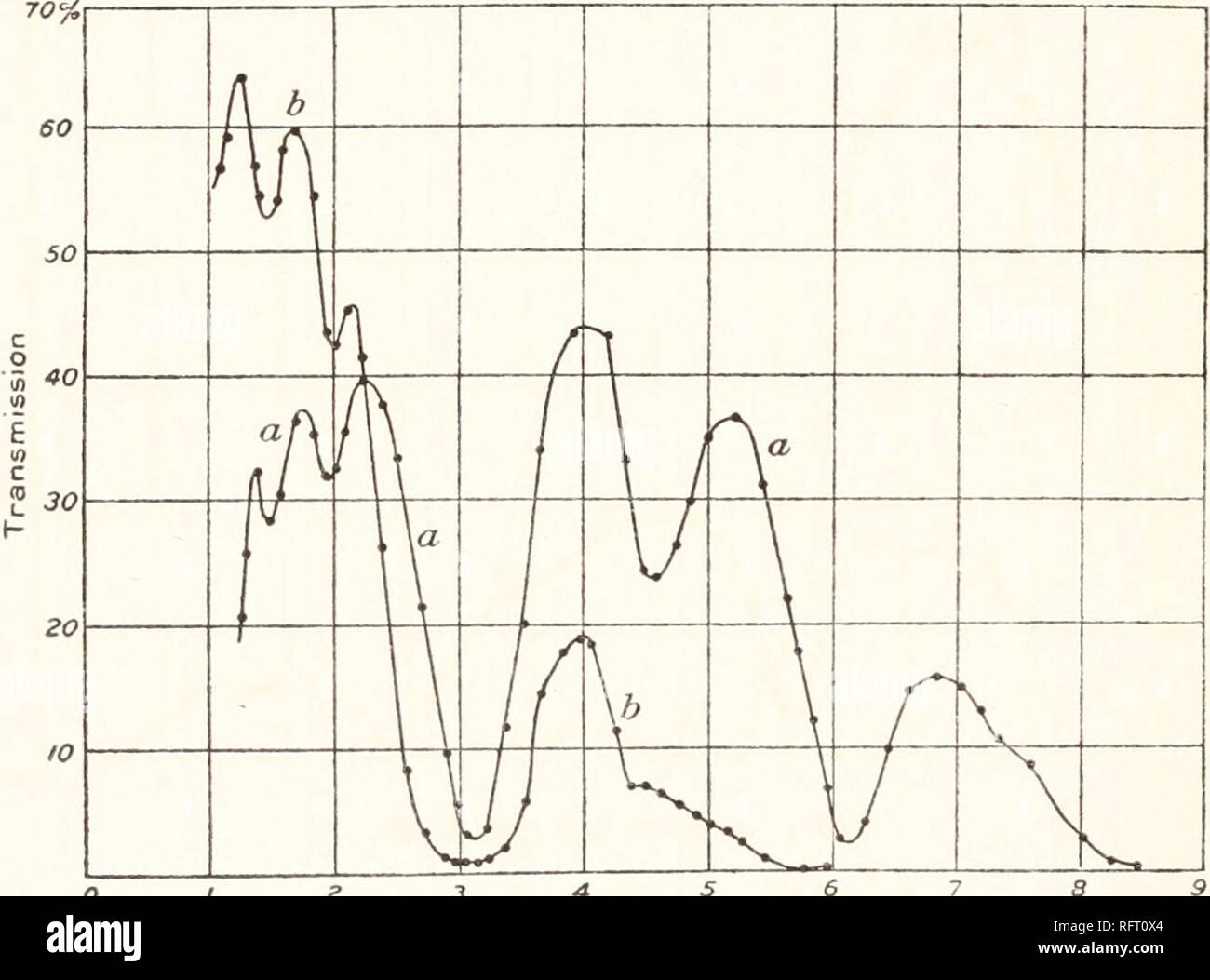. Carnegie Institution of Washington publication. 24 INFRA-RED TRANSMISSION SPECTRA. 3, and 4.75 /x, beyond which point the opacity becomes too great for further exploration. The crystals obtainable were small, so that the section was not quite long enough to cover the whole slit. STILBITE (CaAl2Si6Ow+6H2O). (Transparent section cut perpendicular to optic axis. f = o.ii. Curve a, fig. 7.) The stilbite curve is to be noticed for its great transparency with all the water bands superposed. There do not appear to be any important bands belonging to the mineral itself. POTASSIUM ALUM (K2SO4Al2(SO4)

Image details
Contributor:
Book Worm / Alamy Stock PhotoImage ID:
RFT0X4File size:
7.2 MB (192.3 KB Compressed download)Releases:
Model - no | Property - noDo I need a release?Dimensions:
1837 x 1361 px | 31.1 x 23 cm | 12.2 x 9.1 inches | 150dpiMore information:
This image is a public domain image, which means either that copyright has expired in the image or the copyright holder has waived their copyright. Alamy charges you a fee for access to the high resolution copy of the image.
This image could have imperfections as it’s either historical or reportage.
. Carnegie Institution of Washington publication. 24 INFRA-RED TRANSMISSION SPECTRA. 3, and 4.75 /x, beyond which point the opacity becomes too great for further exploration. The crystals obtainable were small, so that the section was not quite long enough to cover the whole slit. STILBITE (CaAl2Si6Ow+6H2O). (Transparent section cut perpendicular to optic axis. f = o.ii. Curve a, fig. 7.) The stilbite curve is to be noticed for its great transparency with all the water bands superposed. There do not appear to be any important bands belonging to the mineral itself. POTASSIUM ALUM (K2SO4Al2(SO4)a-|-24HaO). (Cut perpendicular to axis. t = 0.085 mm.; transparent. Curve b, fig. 7.) The exploration of the spectrum extends to 3 /*. The water bands at 1.5 and 2 n are present. With 24 molecules of water and SO4 bands. 01 a 3 4 5 6 FIG. 8.—Natrolite (a); Scolecite. at 455ft, to be mentioned later, it would not be possible to penetrate beyond 3 /*, unless a thinner section could be made. NATKOLITE (Na2Al2SisO10+2H2O). (Orthorhombic section ground parallel to m; subtranslucent; f = o.u mm. Curve a, fig. 8.) The specimen from which this section was cut was a tuft of acicular crystals. The section was made from the more massive part, and was almost opaque for the thickness used. The curve (a) in fig. 8 shows the water bands in their usual positions and proper intensities.. Please note that these images are extracted from scanned page images that may have been digitally enhanced for readability - coloration and appearance of these illustrations may not perfectly resemble the original work.. Carnegie Institution of Washington. Washington, Carnegie Institution of Washington